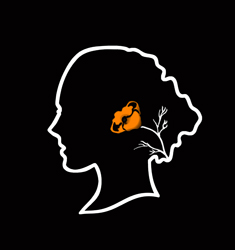Dr. John Johnson, watercolor, 25x30, by Holli Harmon
How We Find What We Love and Discover Who We Are
Grade: 6th
Subject: Ancient Civilizations, Museum, Archeology, Problem Solving
Class Session: 1
Lesson Summary: CCSS History “Geography is of special significance in the development of the human story. Continued emphasis is placed on the everyday lives, problems, and accomplishments of people, their role in developing social, economic, and political structures, as well as in establishing and spreading ideas that helped transform the world forever. Students develop higher levels of critical thinking by considering why civilizations developed where and when they did, why they became dominant, and why they declined. Students analyze the interactions among the various cultures, emphasizing their enduring contributions and the link, despite time, between the contemporary and ancient worlds.” Dr. Johnson’s contributions to the field of anthropology and his distinct links to our local history are a great gateway for students to explore geography and ancient civilizations. His own life story offers a personal element to a highly technical subject. Through Dr. Johnson’s story, students can learn how to solve problems and seek opportunities to do what they love.
Lesson Objectives:
Students will learn how to look for problems and develop a plan of action to solve the problem
Students will learn the about the coast migration theory and look at current theories which support it
Students will learn the systems for food supply, travel and cultural development of first nations.
Materials:
Portrait of Dr. Johnson by Holli Harmon
A visit to the Santa Barbara Museum of Natural History
Yoga during PE
Chumash History Resources: http://www.santaynezchumash.org/history.html
http://sbnature.org/ - Anthropology where Dr. Johnson is head curator
Problem Solving diagram examples: http://diytoolkit.org/tools/problem-definition-2/
Lesson Plan:
Show the portrait of Dr. John Johnson
See. Think. Wonder
If someone spots the Chumash symbols in the sky, introduce the lesson.
Problem solving and early archeology
Play the video interview of Dr. Johnson
Students answer: What did you notice? What surprised you? What did you learn?
Hand out the essay on Dr. Johnson, do a close group reading in table groups
Apply this knowledge to current unit understanding of early people’s
Talk about the archeological process https://msu.edu/~aarondan/methodsofarchaeology.htm
Focus on Dr. Johnson’s question of “Who lived here?” Model for students how to create a three step problem solving grid with assumptions underneath. The problem could be as simple as: My dog is always hungry when I come home, to the school library needs more money for books
Help students create their own diagrams.
Read on an archaeology's role with museums.
Assessment:
Problem Solving Diagram
Contribution to discussion
Exploration of their life goals
Standards Addressed:
6.1 Students describe what is known through archaeological studies of the early physical and cultural development of humankind from the Paleolithic era to the agricultural revolution.
1. Describe the hunter-gatherer societies, including the development of tools and the use of fire.
2. Identify the locations of human communities that populated the major regions of the world and describe how humans adapted to a variety of environments.
3. Discuss the climatic changes and human modifications of the physical environment that gave rise to the domestication of plants and animals and new sources of clothing and shelter.
Created By: Katherine Kwong Intern Fall 2016

